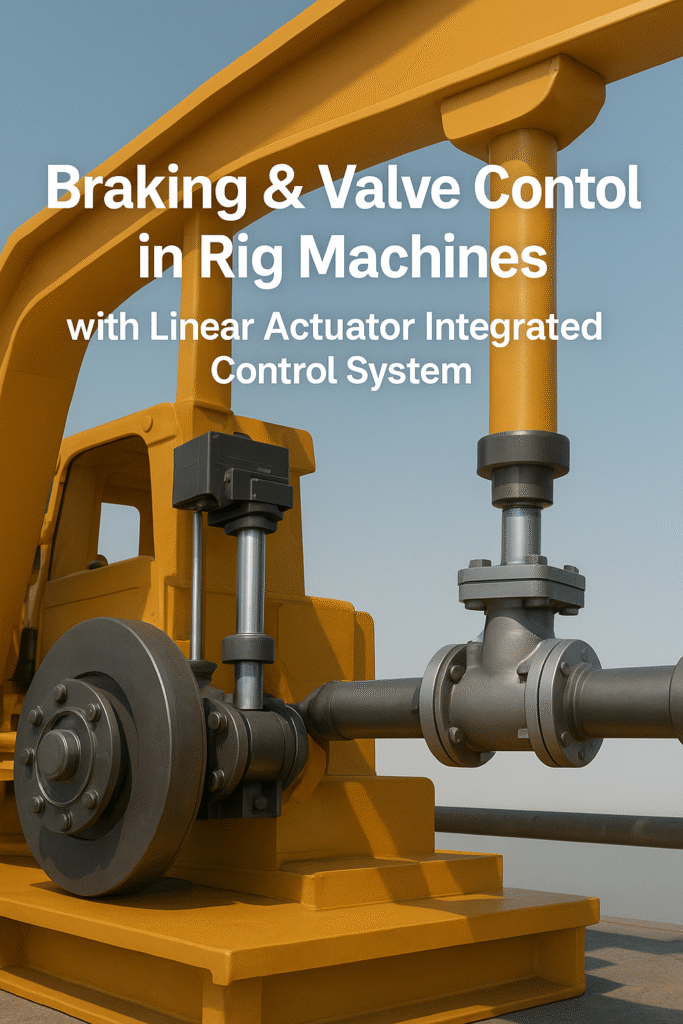Rig machines are critical in drilling, mining, and heavy construction industries, where precision, safety, and reliability are non-negotiable. Among the most important subsystems in these rigs are braking systems and valve controllers, which ensure controlled operation and worker safety. Traditionally, these mechanisms have been operated through hydraulic or pneumatic systems. However, industries are now shifting toward electric linear actuator integrated control systems for better efficiency and smarter automation.

Why Linear Actuators for Rig Machines?
Electric linear actuators provide direct, precise, and powerful motion, making them a perfect fit for rig machines where operational safety and accuracy are essential. Compared to hydraulics and pneumatics, actuators offer:
- Precision Control: Smooth, accurate adjustment for braking and valve operations.
- Reduced Maintenance: No fluid leaks, pumps, or hoses.
- Energy Efficiency: Operates only when needed, reducing power consumption.
- Automation Ready: Easily integrates with electronic control units (ECUs) and PLCs.
- Safety Compliance: Quick response time for emergency shutdowns and controlled braking.
Applications in Rig Braking & Valve Control
- Braking Systems
- Linear actuators can apply, hold, or release rig brakes with precise force.
- Automated braking ensures safety during rig downtime, heavy load handling, or sudden stoppages.
- Integrated sensors provide real-time monitoring of brake engagement and wear status.
- Valve Controllers
- Actuators adjust and control rig valves for drilling mud flow, pressure regulation, and fluid management.
- Programmable control ensures consistent valve positioning without manual intervention.
- Position feedback integration allows operators to monitor flow control remotely.
Benefits of Integrated Control Systems
By combining linear actuators with intelligent control systems, rig machines gain:
- Remote Operation: Operators can manage braking and valve adjustments from a control room.
- Fail-Safe Operations: Emergency stop and auto-lock features enhance reliability.
- Data Feedback: Real-time monitoring for predictive maintenance and performance optimization.
- Durability: Designed to withstand harsh rig conditions like dust, vibration, and temperature extremes.
Future of Rig Automation
The demand for digitally controlled, actuator-driven systems in rigs is growing rapidly. With IoT-enabled controllers, rig operators can achieve smarter braking and valve control, reducing downtime while improving overall safety. Transitioning from hydraulic to electric actuator solutions not only modernizes rig operations but also aligns with global goals for energy-efficient, low-maintenance, and sustainable machinery.

